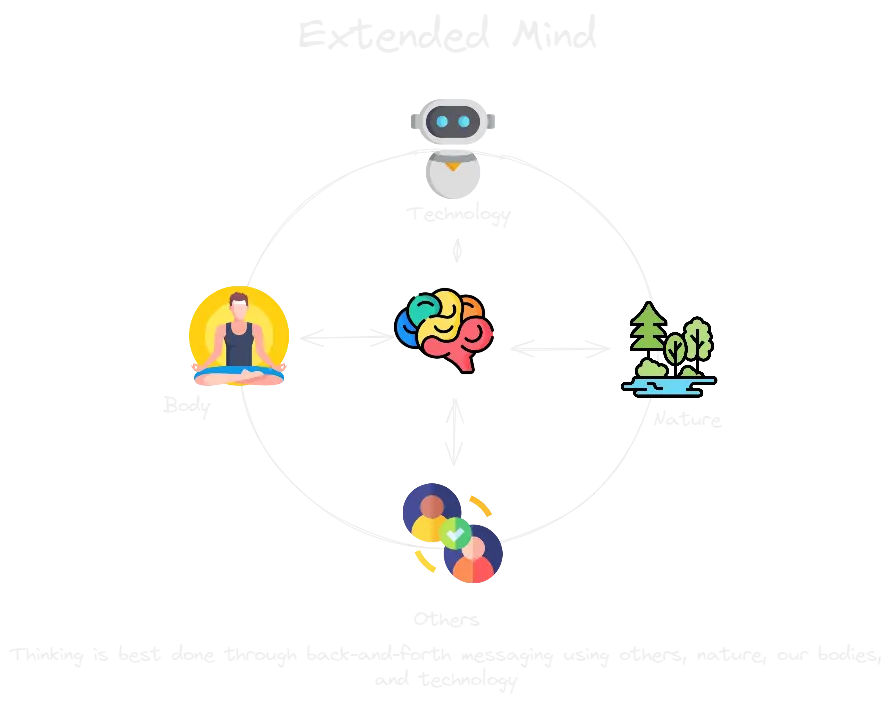Extended Mind
Notes
The extended mind theory is that our thinking capabilities are not limited to the biological organ of our Human Brain, but rather some of it relies on the Context and Social Environment we are in. We can separate it into:
- Thinking with others - The process of Deliberation and debating with others helps us to develop our thinking. We are exposed to different point of views, detect weaknesses in our arguments, and are "forced" to spend more time developing our thoughts because we face resistance. peer support
- Thinking with nature - having Nature walk or even just some Solitude allows us to enter a different mental state, activate our Downtime brain.
- Thinking with our bodies - The Mind-body connection means that what we do with our bodies affect the mind and vice versa. By being more physically active, by trying to explain things with our hands, or move as we think, we can unlock new ways of thinking. Mind-Body Duality
- Thinking with technology - We can use external devices to augment our thinking. This could be through Effort Storing, where we develop an idea across time, each session dedicating our full attention such that it can benefit from increased cumulative mental effort. Some say that writing also increases our thinking by forcing us to come up with a logical sentence describing our thoughts. Technology can also be our editor, with the advancement of AI tools LLM that can help us use best practices to criticize, edit and offer improvements to our thoughts, similar to thinking with others.
Visual

Overview
🔼Topic:: Human Nature (MOC) 🔼Topic:: Memory, Attention and cognitive load (MOC) ↩️Origin:: The extended mind (book) 🔗Link::